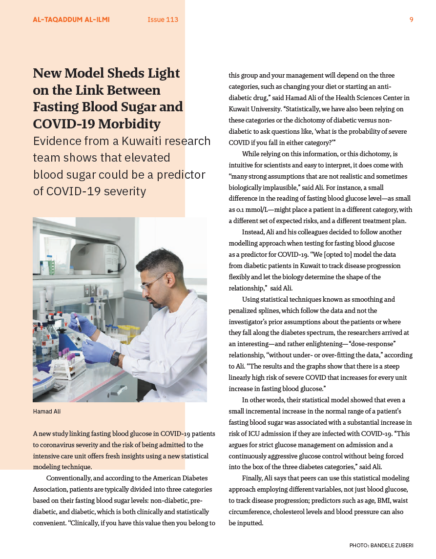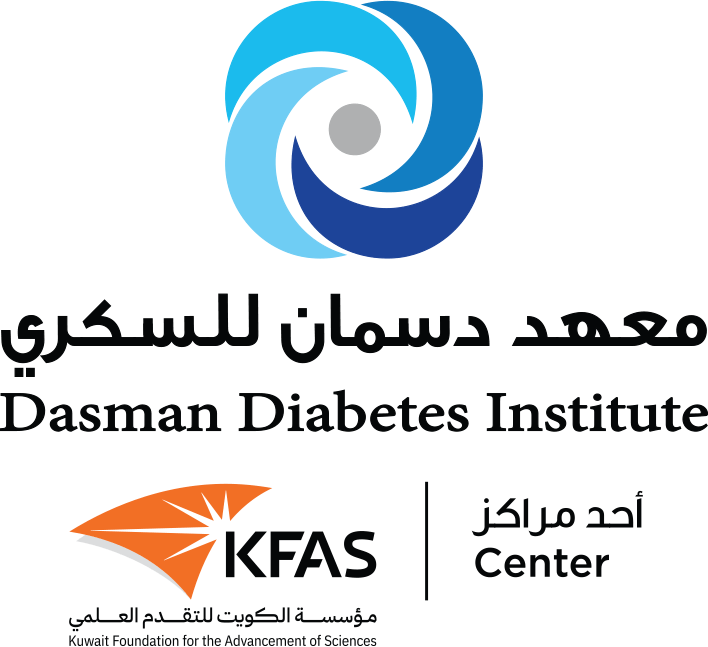
Evidence from a Kuwaiti research team shows that elevated blood sugar could be a predictor of COVID-19 severity.
New Model Sheds Light on the Link Between Fasting Blood Sugar and COVID-19 Morbidity
Published on 05/07/2021
A new study linking fasting blood glucose in COVID-19 patients to coronavirus severity and the risk of being admitted to the intensive care unit offers fresh insights using a new statistical modeling technique. Conventionally, and according to the American Diabetes Association, patients are typically divided into three categories based on their fasting blood sugar levels: non-diabetic, prediabetic, and diabetic, which is both clinically and statistically convenient. “Clinically, if you have this value then you belong to this group and your management will depend on the three categories, such as changing your diet or starting an antidiabetic drug,” said Hamad Ali of the Health Sciences Center in Kuwait University.
“Statistically, we have also been relying on these categories or the dichotomy of diabetic versus nondiabetic to ask questions like, ‘what is the probability of severe COVID if you fall in either category?’ While relying on this information, or this dichotomy, is intuitive for scientists and easy to interpret, it does come with “many strong assumptions that are not realistic and sometimes biologically implausible,” said Ali. For instance, a small difference in the reading of fasting blood glucose level—as small as 0.1 mmol/L—might place a patient in a different category, with a different set of expected risks, and a different treatment plan. Instead, Ali and his colleagues decided to follow another modelling approach when testing for fasting blood glucose as a predictor for COVID-19. “We [opted to] model the data from diabetic patients in Kuwait to track disease progression flexibly and let the biology determine the shape of the relationship,” said Ali. Using statistical techniques known as smoothing and penalized splines, which follow the data and not the investigator’s prior assumptions about the patients or where they fall along the diabetes spectrum, the researchers arrived at an interesting—and rather enlightening—“dose-response”
relationship, “without under- or over-fitting the data,” according to Ali. “The results and the graphs show that there is a steep linearly high risk of severe COVID that increases for every unit increase in fasting blood glucose.”
In other words, their statistical model showed that even a small incremental increase in the normal range of a patient’s fasting blood sugar was associated with a substantial increase in risk of ICU admission if they are infected with COVID-19. “This argues for strict glucose management on admission and a continuously aggressive glucose control without being forced into the box of the three diabetes categories,” said Ali. Finally, Ali says that peers can use this statistical modeling approach employing different variables, not just blood glucose, to track disease progression; predictors such as age, BMI, waist circumference, cholesterol levels and blood pressure can also be inputted.


